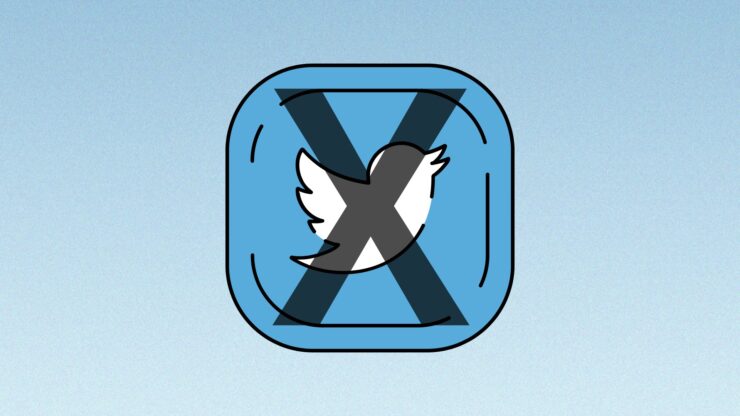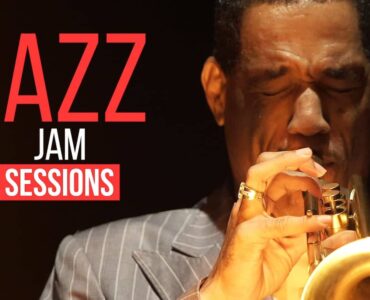Unless you’ve been hiding under a rock for the last decade or so, you probably have at least a vague awareness of what X (formerly known as Twitter) is, especially since the company was taken over by billionaire Elon Musk. In this blog, we’ll go through some top tips for using Twitter more effectively as a musician…
X has gone through some major changes recently – not least its change in name.
From bluetick verification to highlights and more, X has had a series of updates since it’s new owner took over.
Social media has had a massive impact on the way we promote and market music, and it isn’t going away any time soon.
As such, none of us can afford not to become better acquainted with the platform, and there is no harm in going over a few basics.
A brief history of Twitter (now X)
- 2006 – Founder member Jack Dorsey sends the first ever tweet
- 2007 – Twitter wins the SXSW Web Award
- 2009 – A plane crash on the Hudson River in New York City is first reported on Twitter
- 2010 – Twitter launches promoted tweets and accounts
- 2011 – The “Arab Spring” Pro-Democracy movement utilises Twitter extensively to share pictures and organize events
- 2012 – President Obama marks his election victory with a tweet
- 2014 – The famous “Oscar Selfie” creates an unprecedented 3.3 billion impressions
- 2022 – Elon Musk begins to openly criticise the way Twitter operates.
- 2022 – Musk becomes the largest shareholder in Twitter and is invited to join its board of directors but declines.
- 2022 – Musk makes an offer to purchase Twitter as a private company.
- 2022 – Elon Musk announces his intention to pull out of the deal, citing the number of fake accounts; Twitter responds with a lawsuit.
- 2022 – The purchase of Twitter is completed for a reported figure of $44 billion.
- 2023 – Musk rebrands Twitter as ‘X’
The basics of using X (Twitter)
- X (Twitter) is a social media platform with reportedly over 400 million users
- Anyone can sign up for X (Twitter)
- It allows its members to post “Tweets” (previously limited to 140 characters or less, now expanded to 280 words), as well as including pictures, video links, and more.
- You can also hashtag (#) tweets with a subject or label that is searchable.
- X (Twitter) also allows people to communicate privately via Direct Messages (DMs).
- In order to see someone’s tweets in your feed, you must either “follow” them or have them “retweeted” (shared) by someone you follow.
X is an important source of information and promotion – especially for musicians.
Whether it’s breaking news, dropping albums, or industry advice, X can be very beneficial.
Indeed, out of the top 10 most-followed people on the platform, 50% of them are musicians.

What makes X (Twitter) unique?
While at its core, X (Twitter) is a social media platform, just like Facebook or Instagram, it has several important factors that differentiate it.
One reason many famous celebrities and musicians use X is that they can immediately and directly interact with their audience and receive virtually instantaneous feedback.
One of the most important things to remember about X is that its major advantage is also its disadvantage – tweets can be inherently forgettable (with some exceptions – Ed Balls may disagree, for instance).
On X (Twitter), there is a constant stream of information, and new tweets are being put out literally all the time.
A Facebook status can hang around in your news feed for some time (with people liking or commenting), whereas (unless you get many likes and retweets) even some prolific tweets can end up lost in a stream of traffic.
On the other hand, this does mean that you can tweet quite a lot without much risk of annoying your audience by taking up too much of their feed.
Below are some simple do’s and don’ts to help musicians on X (Twitter).
Consider your audience
The demographics of who is joining various social media platforms and at what rate are always changing.
Different styles of music will sometimes be more popular with some demographics than others.
Learning about who your audience is and where they are will help you allocate your time efficiently to each social media platform – X is only ever going to be effective for marketing as a musician if your fans are already on it.
As such, make sure you understand who is coming to your shows before you embark on a big Twitter promotion!
It can be argued that finding the right communities of people to promote to is slightly harder on X (Twitter), as you don’t have groups and community pages of people to post in.

Have separate accounts
This is something of a judgment call.
However, in the same way that many people have personal/private lives and business/professional ones, there is an argument to be made that it could be beneficial to have your online presence run similarly.
Sometimes on Twitter (or any other social media platform), you may want to talk about or debate controversial topics like politics or religion, and you may not want those views represented in your professional life.
This is especially true for bands. Having several members may well mean that you don’t all hold the same views, and it would be unfair to represent the band that way.
That said, more political bands or acts looking to communicate a specific message may want to have a more liberal attitude to what goes on their X profile, and a very personal and opinionated style online has proved very effective for some musicians… Controversy, for instance, will always get people talking.
This is juxtaposed by the fact that showing some personality on Twitter will always go down well, and striking a healthy balance between strict professionalism and a personal approach is very important.
Interact with people
This may seem like an obvious point, but make sure you engage with your audience.
Too many acts can get lazy or even seem to rise above responding to fans on X.
At the grassroots level, an audience is definitely going to value interaction with the band, and it helps bring them into the online community of support you are ultimately looking to create. This means you should selectively retweet fans as well!
Interact with other bands on X and your colleagues within the profession because their followers may well pick up on it and follow you as well.
Don’t always post exclusively about your band – find content to retweet that your fans might be interested in.
X (Twitter) accounts that deal with breaking music and technology news are great sources of interesting tweets and article links.
If you’re a function band, more and more enquiries are being generated through social media, so it’s definitely worth being active. Some people will have much more confidence in contacting you on social media than calling.
Use the trends and hashtags selectively
One of the great features that have always been useful on X is that you don’t have to work hard to figure out what people are talking about – the trends are literally displayed in front of you.
As such, get involved with trending topics and interact! If Coldplay has just released a new album that’s trending, tweet about it (whether you like it or not!).
Chances are that some people are going to see it and want to join in the discussion and interact. Obviously, this is just an example and it’s going to depend on what kind of band you are and the image you’re looking to portray.
Look to others for inspiration
At the grassroots level, check out how your favourite bands use Twitter successfully and follow their example.
Catfish And The Bottlemen (@thebottlemen) are a great example of a band breaking through from relative obscurity to national stardom in a concise space of time while still seemingly retaining a great deal of control of their social media presence and having a lot of their personality as a group shine through.
Remember, older or more established bands will often have Social Media Managers that may not be directly interacting with the band and will be relying on older content and back catalogue.
Avoid replying to ‘hate mail’
Some people are going to love you; some people aren’t. The best thing to do is not take it personally. Hopefully, they won’t actively take to tweeting about how much they dislike your band, but as you become more successful, the odds of this taking place will grow exponentially.
As a general rule, the best policy is to rise above it. You’re a professional and should act like one.
That said, in a minority of cases, the opposite has seemed to work in people’s favour. Singer/Songwriter James Blunt has gained quite a reputation for responding to trolls online in his own unique and sarcastic way!
Don’t sync with Facebook
While the ease of use that comes with being able to post on both social networking sites at once is definitely tempting, both Facebook and Twitter are completely different platforms and should be treated as such.
Hashtagging, for example, while completely normal on Twitter, is still something of a novelty on Facebook and definitely not to be overused.
Don’t start tweets by tagging people
If you begin a tweet by tagging someone, only people that follow both of you will see it.
The purpose of this is not to clutter up people’s newsfeeds with constant conversation. If you’re looking to publicise what you tweet as much as possible, then consider adding a dot (.) to the start of your tweet or waiting to tag them later in the text.
X themselves state: “When you post a Tweet beginning with a username, only people who follow both you and the account you are mentioning will see the Tweet in their Home timeline.
“If you’d like all of your followers to see the Tweet, the best way is to Retweet or Quote Tweet.”
Don’t post any content that violates X’s terms of service
It may well be worth taking a couple of minutes to browse the rules and regulations of the site if you’re going to be posting anything that could be considered against their terms of service.
Accounts that breach X’s rules and policies will be subject to action.
10 Twitter accounts for musicians to follow
@HypeBot
Great source for Music Technology news.
@DigitalMusicNews
Links to Intriguing online articles, and music industry news.
@BBCSounds
The new source for everything music at the BBC – podcasts, radio and music.
@WeAreTheMU
The Musicians Union regularly post updates and news on Twitter.
@JamesBlunt
A rather unique take on handling negative feedback!
@nilerodgers
Legendary songwriter, producer and session musician offering you a snapshot into what life is like at the top of your profession.
@MarkRonson
Award winning producer whose finger is truly on the pulse of today’s music industry.
@thebottlemen
Catfish & The Bottlemen are a breakthrough rock band with a very engaging style of social media.
@lmm_UK
Last Minute Musicians is one of the largest entertainment directory services in the UK, with close to 2000 members and 57,000 customers every month. They also publish articles and music industry guides…. as you may have noticed!
@howtogetgigs
A Last Minute Musicians run Twitter account providing free advice on how to get your band more gigs.
Useful plugins & sites
Hoot Suite
Hoot Suite is a great social media tool for musicians who already use or plan to use X to help connect with fans and market their music.
Hoot Suite allows you to keep control of multiple social media sites from one place (e.g. Facebook, Linked In, etc.) and allows you to pre-schedule tweets that will automatically post for you.
This gives busy musicians a chance to “keep up” with the online world, even whilst in the middle of a muddy field performing at a festival!
You don’t need to be online all the time any more to keep increasing your online presence!
Hashtags
You may also be interested in Hashtags.org for hashtag information.
The # symbol (called a hashtag) is used to mark a keyword or topic in a tweet. Any X user can categorise or follow topics with hashtags.
More information about twitter for musicians is available from the makeitinmusic.com site.
If you have a minute, please check out how to get gigs’ X page.
Do you have a unique approach to X (Twitter)? What do you find your fans respond to best? Have your say in the comments below




















